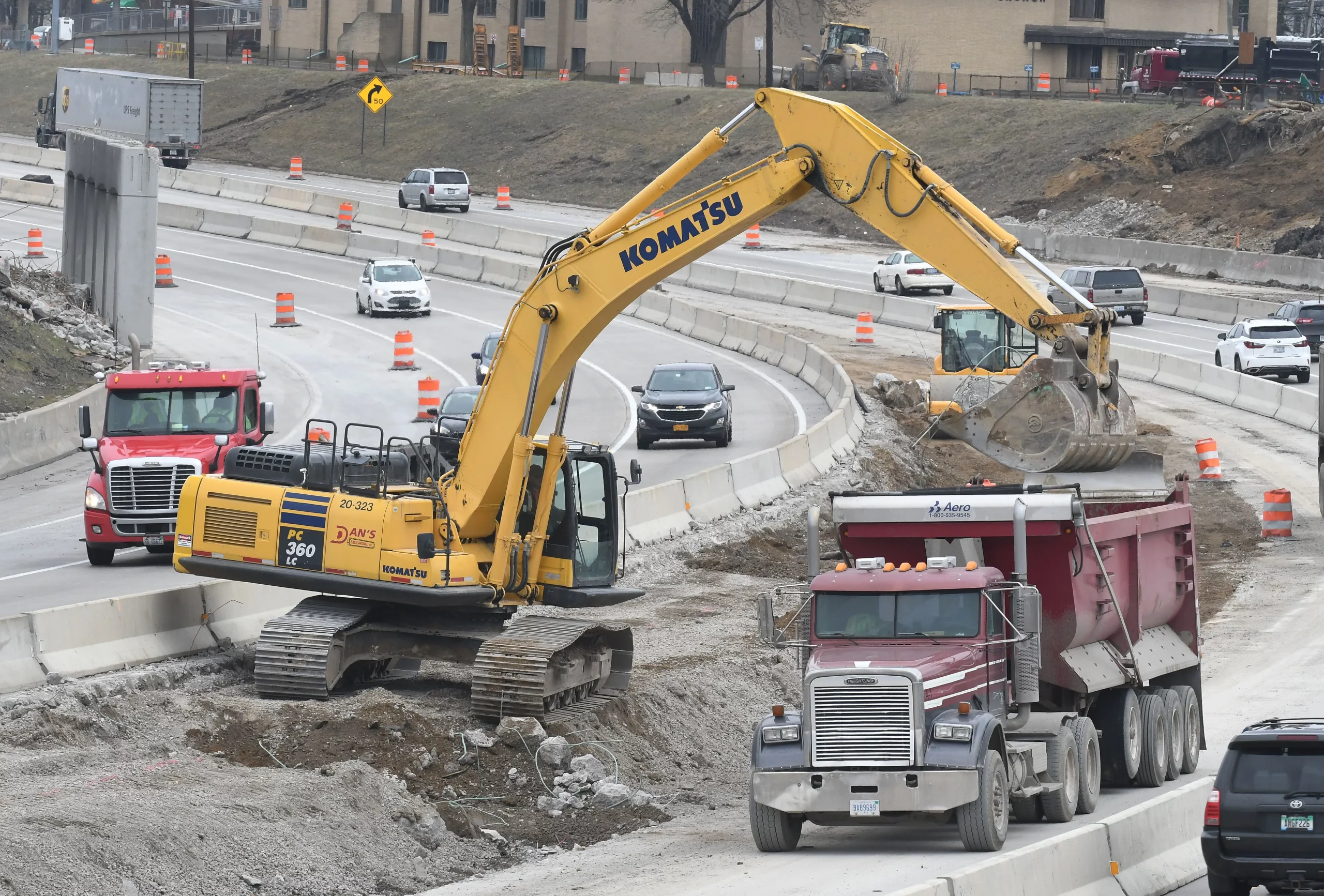Attention, Missourians! Planning a road trip or just trying to survive another construction season? Fear those orange cones no more! This comprehensive guide equips you with the knowledge to navigate Missouri’s road construction projects like a seasoned pro.
Essential Guide for Road Construction in Missouri
Before you hit the open road, arm yourself with information to avoid delays and frustration. Here’s how:
Stay in the Loop with MoDOT
Your first line of defense is the Missouri Department of Transportation (MoDOT). Their weekly reports are treasure troves of information, detailing road closures, detours, and project updates.
- Road Work Information Hub: MoDOT’s central hub provides a user-friendly interface to access project details, traffic alerts, and road conditions.
- Interactive Roadwork Map: This map offers a visual representation of planned and ongoing projects. Zoom, search, and explore specific areas to understand the potential impact on your route.
- Weekly Construction Report: Stay ahead of the curve with this weekly report highlighting upcoming roadwork activities, including project descriptions, timelines, and detour information.
- Road Conditions and Closures: MoDOT’s Traveler Information Map and System Report are your go-to resources for real-time updates on road conditions, accidents, weather-related hazards, and construction-related closures.
Checking these resources before you depart can save you time, hassle, and unnecessary stress.
Want to dive in and explore these resources yourself?
Check out the Missouri Department of Transportation – Road Conditions and Closures.
Roadwork 101: A Behind-the-Scenes Look
Ever wonder what those orange barrels are hiding? Let’s demystify the process:
- Planning and Design: Just like you wouldn’t embark on a journey without a map, road construction begins with meticulous planning. Engineers define project scope, budget, and timeline, conduct environmental impact assessments, and develop detailed blueprints.
- Site Preparation: Surveyors mark the construction site, and crews clear vegetation, remove obstacles, and prepare the ground for construction. Think of it as creating a blank canvas for the road.
- Construction: This is where the road takes shape. Crews lay down the foundation, install drainage and utilities, construct pavements (asphalt or concrete), and build bridges or embankments if necessary.
- Finishing and Maintenance: The final touches include applying lane markings, installing signage and guardrails, and conducting regular inspections and repairs to ensure the road’s longevity.
Key Takeaways:
- Road construction is a carefully orchestrated process involving multiple stages.
- Thorough planning is crucial for a successful project.
- Site preparation ensures a solid foundation for the road.
- Regular maintenance is essential to keep roads safe and functional.
What are the Stages of Road Construction?
Let’s take a deeper dive into the transformation of dirt to a smooth, safe road:
Planning and Design: Laying the Groundwork
This initial stage determines the project’s goals, costs, timeline, and environmental impact. Think of it as setting the budget and roadmap for the entire project. The result? Detailed blueprints that guide the construction crew.
Site Preparation: Prepping the Canvas
With plans approved, it’s time to prep the site. Surveyors map the road’s path. Vegetation is cleared, and the ground is excavated and leveled to create a stable base.
Construction: From Blueprint to Reality
The road begins to take shape. This phase involves:
- Laying the Foundation: Compacting layers of materials to create a strong base capable of handling heavy traffic.
- Drainage and Utilities: Installing drainage systems to prevent water damage and placing utilities like water and power lines beneath the surface.
- Pavement: Laying and compacting either asphalt or concrete for a smooth driving surface.
- Structures: If the road requires bridges or elevated sections, specialized equipment and techniques are used for their construction.
Finishing and Maintenance: The Finishing Touches
With the pavement laid, the finishing touches are added:
- Safety Features: Lane markings, signs, and guardrails are installed.
- Ongoing Maintenance: Regular inspections, patching potholes, repaving, and even major overhauls ensure the road remains safe and efficient for years to come.
What Materials are Used in Road Construction?
Building a durable road involves a blend of materials, each serving a specific purpose:
It Starts from the Ground Up: Soils and Foundations
- Subgrade: This compacted soil layer acts as the road’s foundation.
Adding Strength and Support: Aggregates and Bases
- Base Course: This layer, made of crushed rocks and gravel (aggregates), provides strength, stability, and drainage.
- Subbase: An optional layer between the subgrade and base course, further enhancing drainage, especially in areas prone to waterlogging.
Sticking It All Together: Bitumen and Asphalt
- Bitumen: This sticky, black substance, commonly known as asphalt, binds the aggregates in the base course, creating a smoother surface.
The Tough Customer: Concrete
- Concrete: This robust material, made by mixing cement, water, and aggregates, is ideal for high-traffic roads and structures like bridges and tunnels due to its strength and durability.
A Pinch of This, a Dash of That: Additives
- Additives: Like spices in a recipe, additives enhance the properties of asphalt and concrete, improving durability, flexibility, and resistance to extreme temperatures.
Choosing the Right Recipe: Factors Influencing Material Selection
Factors considered when selecting road-building materials include:
- Traffic Volume
- Climate
- Soil Conditions
- Budget
The Future is Now: Innovations in Road Construction
Advancements in road construction technology include:
- Composite Pavements: Combining the best properties of different materials for enhanced performance.
- Geosynthetics: High-tech fabrics and grids improve subgrade reinforcement and drainage.
- Sustainable Materials: Using recycled materials like asphalt and plastic waste to reduce environmental impact.
Build the house of your dreams with our comprehensive list of construction materials to turn vision into reality and start construction now!
How Can I Find Road Construction Updates in Missouri?
MoDOT is your one-stop shop for staying informed about road construction in Missouri. Remember these key resources:
- Road Work Information Hub
- Interactive Roadwork Map
- Weekly Construction Report
- Road Conditions and Closures
By utilizing these resources and understanding the stages and materials involved in road construction, you can confidently navigate Missouri’s roads and arrive at your destination safely and on time.
Achieve a smooth and even road surface with our expert guide on row in road construction, ensuring a safe and comfortable driving experience. Get insights into the contractual arrangement known as retention fees and understand its implications for both contractors and clients in construction projects.
- Flowers That Start With E: A Complete Guide - April 22, 2025
- 70+ Charming Flowers That Begin With C: A Visual Guide with Growing Tips - April 22, 2025
- How to Identify a Ground Wasp Nest: A Visual Guide - April 22, 2025










